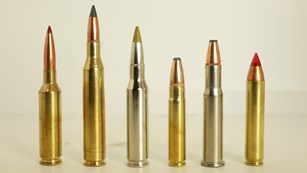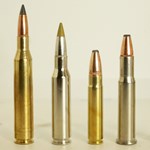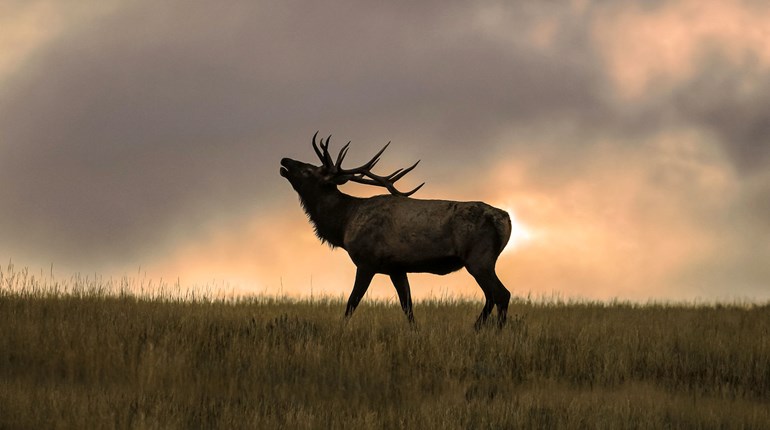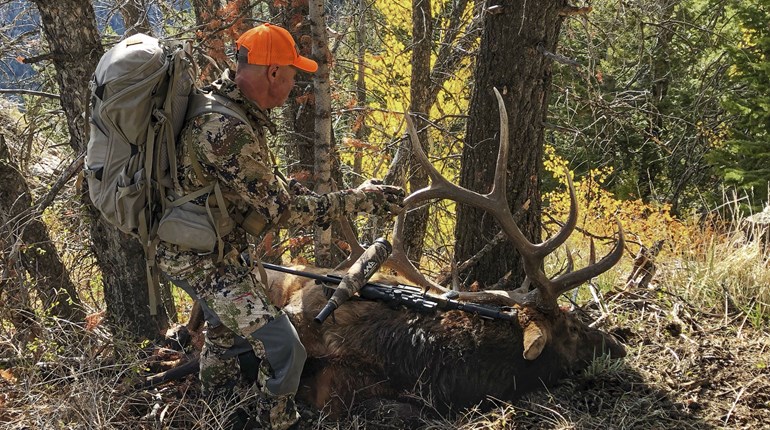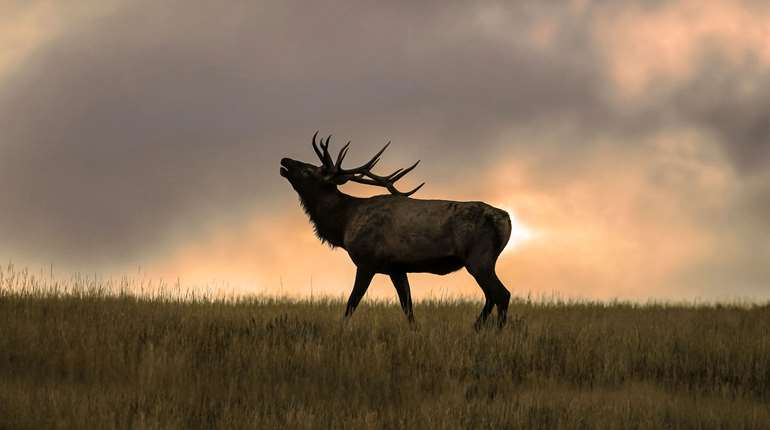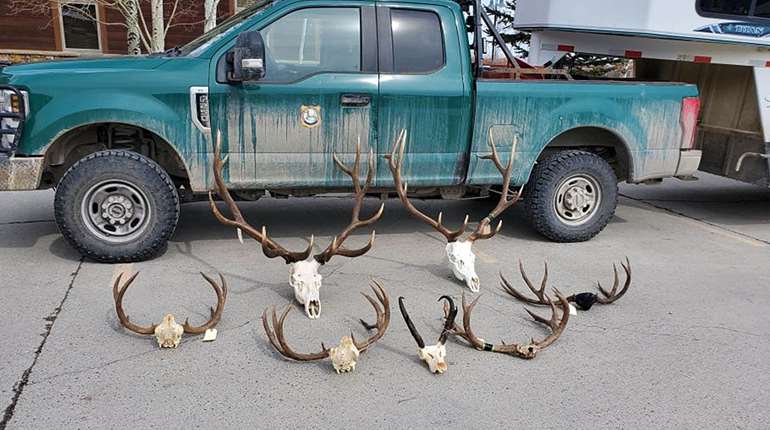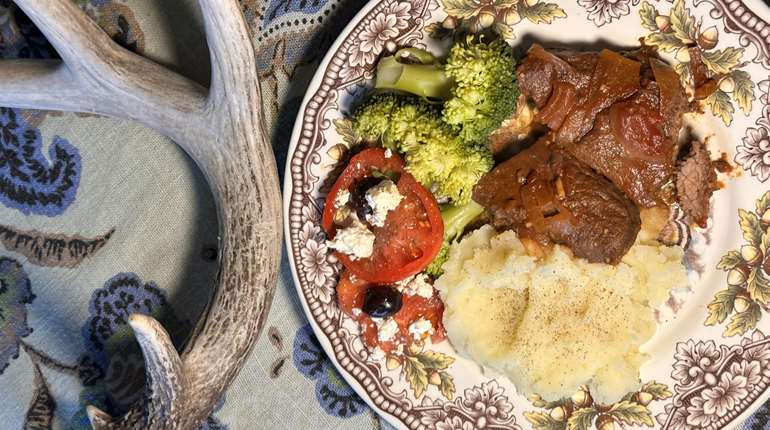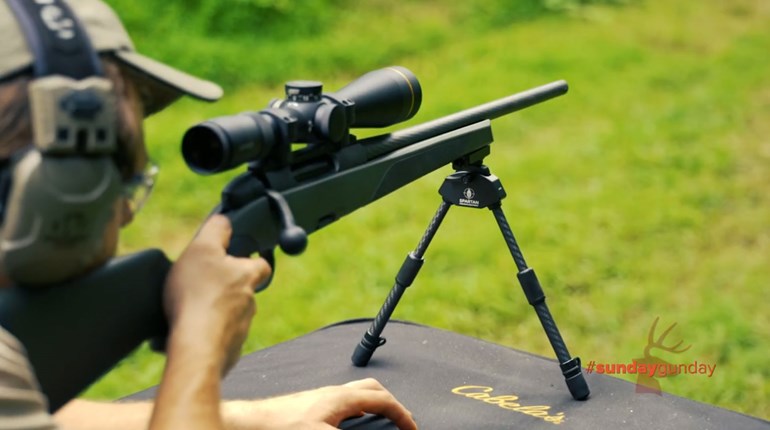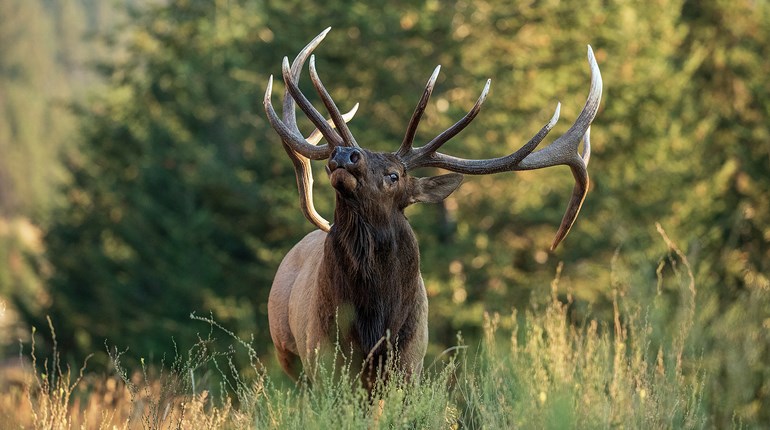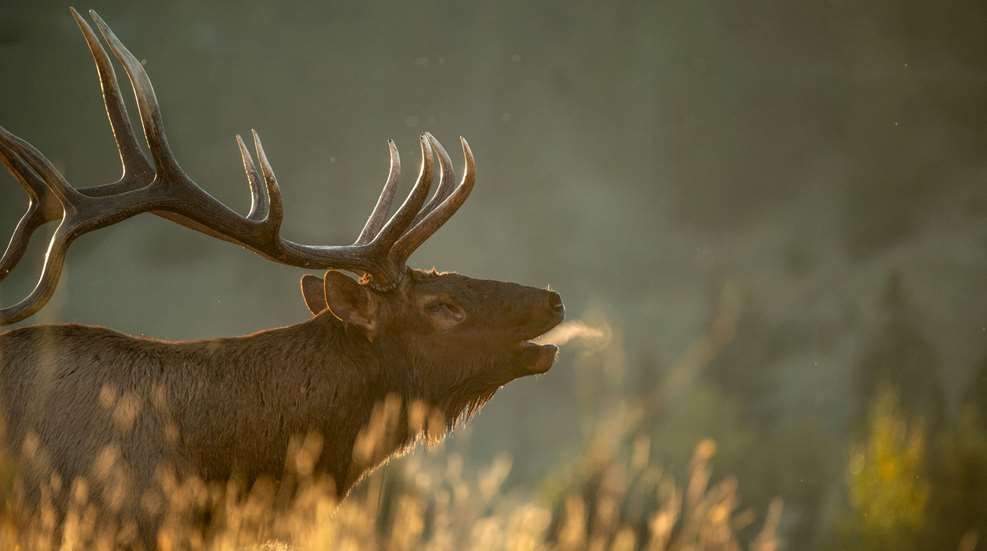
Adventure and personal discovery—those are the first words I utter whenever someone asks what drives me to write a good feature story. There are many factors involved in any hunt: geography, topography, the species hunted, weather, equipment, new people one might meet. As I grow older, it becomes important to find and take note of such factors in a hunt because, let’s face it, I’ve hunted a lot, and I’ve written a lot of feature stories. So, yeah, to put it bluntly: The older I get the more help I could use.
A little more than a year ago, about a week before I departed for a West Texas elk hunt, such help came in the form of a phone call from my guide.
“Scott?” asked the voice on the other end of the phone. “This is Jackie Murphy. I work for Wildlife Systems, and I’ll be your guide for your elk hunt.”
“Hello, Jackie,” I replied.
We chatted a bit. “Have you hunted many elk? What cartridge are you shooting? Have you shot off sticks before?”—elk-hunting stuff like that. I hung up and thought, That’s never happened before; a guide has never called me before a hunt. But hey—he sounds like a nice fellow. I logged on to the outfit’s website (wildlifesystems.com) and, as I hoped, found Jackie’s bio. I learned he was an accountant in a previous life, and, following a lifelong dream, became a guide after attending a guide school in Colorado. He’s been a guide for Wildlife Systems since 2005. Good for Jackie, I thought. That guide school: I’ll have to ask him about that.
■■■
In Texas I met my hunting companion, Chris Gaddy, the project manager of reflex optics for Trijicon. From San Antonio we drove west on I-10 and at Fort Stockton we took a left and headed south on Route 385 toward our destination, Marathon, in the Trans-Pecos Region. If you think of the shape of Texas as an upside-down bird, as I do, then you can picture exactly where we were: in the bird’s head, kind of far back, maybe behind the eye. Incidentally, counting shooting events and hunts, this was my sixth trip to West Texas in three years, and I wondered if there was anything left to discover here. I needn’t have worried.
I learned Marathon is a cool little West Texas town. It lies at the intersection of Route 385 and Route 90, and is a jumping-off point for visitors headed to Big Bend National Park on the Mexico border. Marathon has just about everything a visitor needs including the Brick Vault, a micro-brewery and BBQ joint, and the famous Gage Hotel. And it has at least one AirBnB, which served as our hunt headquarters.
Now, I love to hunt elk probably more than any other critter. There’s just something about elk country that is magical, mainly because of the elk. To be in their midst when the bugling is on—life can’t get much better than that. But to be honest I had no idea there was free-range elk hunting in Texas. I knew about some high-fence setups, sure, but this hunt, while it was on private land, was not one of those. Would it be a real elk hunt?
We hunted the Glass Mountains north of Marathon, on a ranch that is used only a few months per year to fatten cattle for market but at this time of year (October) was empty—except for us … and the elk. There are plenty of elk here, and among them plenty of bulls. One can expect to pursue and shoot a bull in the 280-320 range, said Jackie, and that seemed just fine to me. We found elk not long after entering the ranch through a gate off Route 385, but the hunting wouldn’t be that easy. To find most of the animals, we drove across the flats and up into the mountains, where most of the ranchland was situated.
■■■
Yes, this is a real elk hunt, despite the up-and-down history of elk in Texas.
Historical evidence indicates elk were present once upon a time across much of Texas. Many written sources reference their presence in the 17th century. The earliest written record of humans encountering elk in Texas was in 1601. However, pre-Columbian Texas rock drawings have been discovered that depict elk as far back as 2,000 B.C. It’s possible those animals were a sub-species of Merriam’s elk that used to roam not only Texas but northern Mexico, Arizona and New Mexico. In fact a native population of Merriam’s elk was known to inhabit the Guadalupe Mountains in the 19th century. It’s also possible the majority of elk in the Lone Star State were simply Rocky Mountain elk and Nelson’s elk, a sub-species discovered in Arizona mountains at the turn of the 20th century, which merely migrated east. Regardless, by the late 19th century, elk were present in Texas only in the Guadalupe Mountains. By the turn of the 20th century, they had been extirpated through excessive hunting and loss of habitat.
Then in 1928, a rancher released 44 Rocky Mountain elk from South Dakota into the Guadalupe Mountains. The transplanted population took off from there.
A study by the Borderlands Research Institute in 2015 concluded elk populations in West Texas are increasing greatly, and they are spreading geographically. That can be good or bad, depending on one’s perspective. Elk compete for food with livestock and native wildlife, which can have negative impacts on the desert habitat. The elk can quickly adapt their diet from browse to grass, but the same doesn’t necessarily hold true for other species. The authors of this study believe the elk population in the Glass Mountains has about doubled since the 1980s. Elk populations also have grown in the Davis Mountains and on the Stockton Plateau, just east of our hunting grounds. Indeed, experts believe at least 2,000 elk roam free in West Texas.
All this means elk can also provide recreational opportunities for hunters and wildlife watchers. In 1997, legislators passed a “special-interest action” declaring Texas elk as exotic. Texas Parks and Wildlife classifies them as a nuisance species, which means one can hunt them year-round. There is no closed season. There are few regulations. Hunters can purchase a license over the counter, and even hunt during the peak of the rut without going through a draw. However, since Texas considers them to be a non-game species, these elk cannot be officially registered by the Boone and Crockett Club. It also means they don’t need to be tagged. Today, free-range elk are hunted in the Guadalupe, Davis, Glass, Eagle and Wylie mountains of West Texas.
■■■
In the Glass Mountains, the terrain includes rolling, cedar-covered hills, oak-choked canyons, rimrock and high mesas that stand high above arid flatlands. We covered a lot of ground in the pickup and when we found a band that looked promising we exited the truck and stalked them on foot. We drove, glassed, exited the truck to stand and listen, walked and glassed some more and drove some more. Jackie was ready to call with a bugle or a mew, but the bulls didn’t need coaxing. They were bugling their fool heads off. On more than one stalk we found ourselves surrounded by bulls bugling 300- or 700-yards away. This was fun. It was a matter of finding one we wanted to shoot, noting the wind and making a plan for movement to contact. But, this being an elk hunt, it was common for most plans to fail, in which case we’d call it quits on the stalk and head back to the truck to try again.
It was on one of these walks back to the truck that I suddenly remembered a question I had regarding Jackie’s bio.
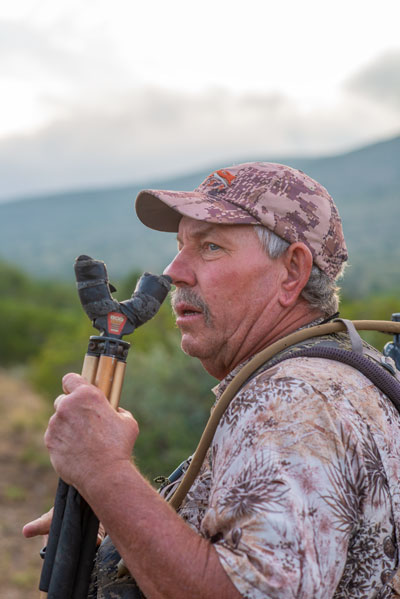
As I walked behind him I asked, “Jackie, didn’t I read in your bio on the outfit’s website that you used to be a CPA? And that you quit that more than 20 years ago and went to a guide school in Colorado, became a guide and never looked back? Might that guide school have been called the Colorado Outdoor Adventure Guide School?” Jackie stopped in his tracks and turned and looked at me like he’d been waiting for the question. “Was it COAGS?” I asked again. He smiled and said, “You changed my life.”
Here’s the backstory. More than 20 years ago, American Hunter sought advertising from outfitters and other outdoor service providers, and even tourism boards if they’d bite. In return we promised the advertisers a feature story about their services, which would run adjacent to their ad. One such advertiser was the Colorado Outdoor Adventure Guide School (COAGS). I’d hunted elk with the parent outfit of COAGS, and I knew some of the people involved in both operations, so I contributed to a feature story also written by then editor in chief John Zent. It was a fun project, as I remember. When I mentioned COAGS I was fishing; it was the only guide school I knew.
In the truck Jackie told his story. He grew up in Brownfield, Texas, and went to Texas Tech where he earned a degree in accounting. At the turn of the 21st century he was working for a big firm, doing what he’d been trained to do, when American Hunter, with my article in it, landed in his mailbox. “I took that issue to work the next day,” he said. “At lunch time, when no one was around, I took it out and read that article. Then I read it again. And when I got home I read it again. A week later I’d turned in my notice and booked a spot at the guide school in Colorado.” Then, to reiterate, he said again: “You changed my life.”
Wow. It’s not often you meet someone who has literally changed his life because of something you wrote. The story could end here as far as I’m concerned, but since this is an elk-hunting story it behooves me to report that we did kill elk.
Indeed, I went on to shoot a nice bull, the exact kind of 6x6 I imagined possible. We spied, stalked, crept to within about 200 yards then set up atop sticks to wait. Finally, I shot and the bull lurched then trotted downhill left-to-right. I tracked him in the Trijicon Tenmile scope and when I could I shot again. It was the biggest-bodied bull I’ve ever taken. It looked like it weighed a thousand pounds. I know everyone says that, and that there are no scales in the backcountry, but honestly, it was the biggest bull I’ve ever shot; had to be a thousand pounds.

The next day, the bull Chris shot gave himself away. We’d heard the bull bugling in a box canyon from our seats in the truck on the valley floor less than a mile away. We were inching our way up a two-track that took us into the canyon where we planned to park and proceed on foot when we spotted the bull just a couple of hundred yards up a hill to our left. Chris simply slipped out the door, set up and shot. The bull dropped so we waited, not wanting to move and lose sight of him. It seemed like forever before we could be sure he was down for good, but when we did the hunt ended.
■■■
That night at the Gage Hotel we enjoyed cold adult beverages and a fabulous meal while we listened to a local band. It was a sublime West Texas evening. I’d shot a 300-inch bull. Chris had shot a 320-inch bull. Jackie was on cloud nine.
By then we’d learned that, during a call with his mother he’d shared news of our coincidence. He beamed: “I kept telling her, ‘You don’t understand: This is the guy.’” He said to me, “I don’t believe in coincidences. Everything happens for a reason.”
If the reason for our meeting was only to provide fodder for this story I guess that’s enough. If it’s as simple as that, I’ll take it. Like I said, these days I need all the help I can get. ah
![]()
Trijicon Tenmile HX Riflescopes
The Tenmile HX line of riflescopes was built by Trijicon for long-range hunting. Standard features include 30mm main tubes, outstanding glass, illuminated reticles in the first or second focal plane, adjustable turrets for return-to-zero operation and made-in-America durability proven by 5,000 rounds of heavy cartridge testing to ensure no reticle shift. Three models include a 3-18x44, 5-25x50 and 6-24x50.
The 3-18x44 uses a red/green Precision Tree reticle in the first focal plane. The 5-25x50 scope is outfitted with a red MOA Center Dot reticle in the second focal plane, or with a red/green PowerDot, MOA ranging reticle in the first focal plane. The 6-24x50 scope is offered with a red or green PowerDot, MOA ranging reticle in the second focal plane. All scopes are built with fully multi-coated, broadband, anti-reflective glass for excellent light transmission, true color and zero distortion; crisp, precise windage and elevation adjustment up to 80 MOA that requires no tools; capped or zero-stop adjusters to prevent accidental shift; repositionable magnification levers that accommodate different shooting positions and rifle configurations; and user-selectable LED brightness settings with an “off” between each setting. I carried a Tenmile HX 5-25x50 FFP with a red/green PowerDot reticle in the first focal plane that retails for $2,300. When you’re hunting something as special as a bull elk, it’s nice to know your rifle wears a no-fail optic. trijicon.com






